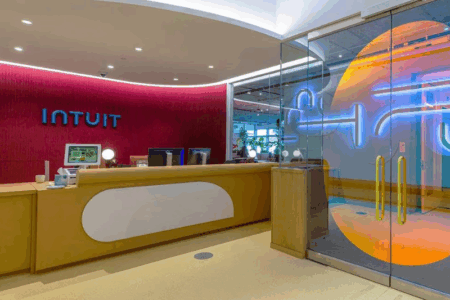Welcome to this week’s edition of stock market highlights where we bring you snippets of information from news events and corporate announcements.
Singapore REITs crash
The Singapore REIT (S-REIT) sector has been under pressure this year due to a combination of high inflation and rising interest rates.
The US Federal Reserve recently raised its benchmark policy rate by 0.75 percentage points, the third consecutive round of increases of this magnitude.
The US policy rate now stands in the range of between 3% and 3.25%, and Federal Reserve chairman Jerome Powell has reiterated the central bank’s tough stance of raising rates further to quell inflation and bring it back to 2%.
As a result of this hawkish tone, many REITs have plunged to their 52-week lows.
Data centre REIT Keppel DC REIT (SGX: AJBU) hit a year-low of S$1.64, down 33.6%.
REITs with foreign properties, such as Elite Commercial REIT (SGX: MXNU) and Prime US REIT (SGX: OXMU) have also plunged by 40.5% and 31.3%, respectively, to their 52-week lows.
Even REITs with strong sponsors such as Mapletree Logistics Trust (SGX: M44U), or MLT, and Frasers Logistics & Commercial Trust (SGX: BUOU), or FLCT, were not spared.
MLT has fallen by 19% year to date while FLCT has slid by 21% over the same period.
And there could be more pain to come for the sector as expectations are for further rate hikes.
Investors should focus on tenant quality and diversification and also keep an eye on the REI’s cost of debt to see if distribution per unit could be adversely impacted.
New property cooling measures
The Singapore government surprised the market by releasing a new set of property cooling measures close to midnight on 30 September.
The last round of cooling measures was introduced just nine months ago in December 2021.
Earlier in September, the Straits Times reported that HDB resale prices had risen for the 26th straight month in August, with a total of 33 million-dollar flats sold.
This news probably alluded to the bullishness in the property market at a time when interest rates were rising sharply.
For the latest measures, the loan-to-value (LTV) limit for HDB loans was lowered from the current 85% to 80%.
Also, with interest rates rising rapidly, the government is concerned that borrowers may see their repayment ability affected.
Hence, the medium-term interest rate floor used to compute the total debt-servicing ratio (TDSR) and mortgage servicing ratio will be raised by 0.5 percentage points.
For residential properties, the assumed interest rate is now 4% (up from 3.5%) while non-residential properties will use 5% now, up from 4.5% previously.
For HDB flats, a new floor rate of 3% will be used for computing the eligible loan amount to prevent borrowers from overstretching.
However, the actual interest rates charged on mortgages will still be determined by private financial institutions such as local banks and finance companies.
These measures will reduce the maximum amount that can be borrowed from HDB.
To tackle the sustained demand for HDB resale flats, the government will impose a 15-month wait-out period for private homeowners before they can purchase an HDB resale flat.
The announcement did mention that this is a temporary move to reduce hot demand for resale flats that will be reviewed in future.
Grab Holdings (NASDAQ: GRAB)
Grab recently held its inaugural Investor Day where management clearly outlined its growth initiatives and objectives for attaining profitability.
Chief Operating Officer Alex Hungate detailed three focus areas for the company.
The first is to solidify its leadership position by working closely with consumers and partners, the second is to build an efficient platform, and the last is to develop financial services capabilities to serve its customer base.
There are several strategic initiatives tied to the above, including growing GrabUnlimited subscriptions, pushing on with its Groceries strategy, and tapping on partnerships to build its ecosystem.
Grab has partnered with Coca-Cola (NYSE: KO) to unlock fresh growth opportunities and also collaborated with Starbucks (NASDAQ: SBUX) in six markets within Southeast Asia across multiple services.
The aim is to eventually port over all merchants’ marketing onto a unified platform that includes advertisements.
Meanwhile, Grab’s digital bank initiative is expected to break even in 2026.
Grab, along with partner Singtel (SGX: Z74), launched GXS Bank earlier last month along with its first saving product.
The company plans to launch its digital bank in Malaysia and Indonesia in 2023, with losses expected to peak next year.
Taken together, Grab expects to chalk up 45% to 55% year on year revenue growth for 2023 and achieve breakeven at the EBITDA (earnings before interest, taxes, depreciation and amortisation) level by the second half of 2024.
Looking for investment opportunities in 2022 and beyond? In our latest special FREE report “Top 9 Dividend Stocks for 2022”, we’re revealing 3 groups of stocks that are set to deliver mouth-watering dividends in the coming year.
Our safe-harbour stocks are a set of blue-chip companies that have been able to hold their own and deliver steady dividends. Growth accelerators stocks are enterprising businesses poised to continue their growth. And finally, the pandemic surprises are the unexpected winners of the pandemic.
Want to know more? Click HERE to download for free now!
Follow us on Facebook and Telegram for the latest investing news and analyses!
Disclaimer: Royston Yang owns shares of Starbucks, Keppel DC REIT and Frasers Logistics & Commercial Trust.





